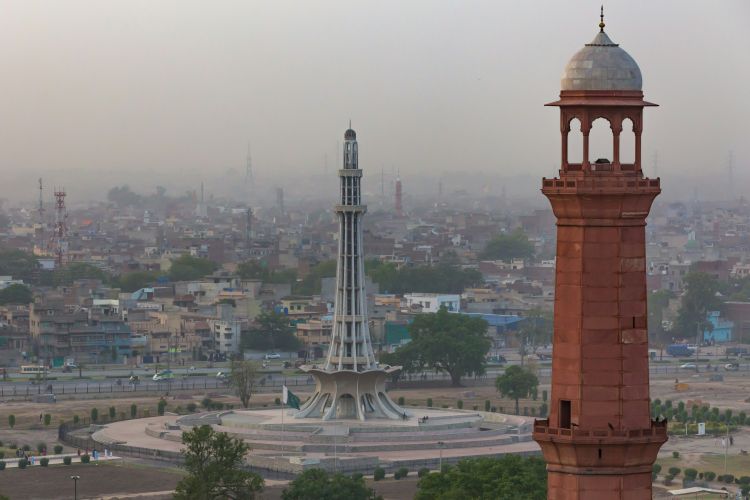
In the midst of a serious economic downturn, the cash-strapped government of Pakistan is looking to sell state-owned enterprises, including the struggling Pakistan International Airlines. Initially set to privatise only loss-making state firms, the government has broadened its plans to include profitable public sector units as well. However, strategic enterprises will not be part of the privatisation drive. The newly formed government is desperately in need of funds before the International Monetary Fund team arrives for a review. Pakistan is seeking a rollover of $12 billion in debt to meet budget targets before the IMF’s arrival. In its latest negotiations with the IMF, Pakistan has sought a new long-term Extended Fund Facility.
The urgency behind this move is obvious. Backed by Pakistan’s powerful military, the Shehbaz Sharif government is looking to reduce the financial burden caused by bleeding state-owned enterprises. These losses are exacerbated by issues such as massive power thefts, a bloated workforce of politically appointed employees, and tax collection problems stemming from the Federal Board of Revenue’s reluctance to implement reforms.
READ | Gold rush: Can the yellow metal sustain its sheen
Pakistan narrowly avoided default last summer, but the IMF programme stepped in to mitigate high inflation and stabilise the economy to some extent. Inflation dropped dramatically from 38% last May to approximately 17% in April this year. The Washington-based IMF has consistently recommended privatisation for Pakistan, which, as the latest report highlights, is grappling with a significant fiscal shortfall.
The government has stated that its job is not to do business but to ensure a business- and investment-friendly environment. It has emphasised that the privatisation process will be transparent, with the sale of Pakistan International Airlines (PIA) being televised, including the bidding and other important steps. Pakistan’s ailing national flag carrier is the country’s third-highest loss-making public sector entity, requiring Pakistani Rs 11.5 billion per month solely for servicing its debts. The government has presented a roadmap for the privatisation programme 2024-2029.
What is ailing Pakistan Economy
Pakistan faces complex challenges, not just an economic downturn. High unemployment and political turbulence are major causes of the country’s instability. According to the East Asia Forum, the Pakistan Democratic Movement coalition government’s election-year policies, such as exchange rate caps and import controls, along with delays in the IMF’s Extended Fund Facility program, have inflicted major damage on an already struggling country.
Additionally, several sectors have long operated without an active taxation regime. Relief schemes for power, petroleum, and food have further strained the government’s resources. With businesses operating at reduced capacity, the public is only interested in seeking relief, subsidies, and concessions. They are not prepared for new taxation measures. This might make the job of putting Pakistan on a trajectory of export-led growth even more challenging.
Its economic woes are evident. Forced to exercise import control measures to rein in the external account deficit, the South Asian economy now faces stagnant growth. Growth is anticipated to hover around 2% this year, compared with the negative growth experienced last year. This stagnation results from sluggish industrial and services sectors, leading to a vicious cycle of greater unemployment, which reached a record high of 8.5% in 2023, surpassing the 6.2% observed in 2021.
Reviving Pakistan economy
Reviving the Pakistani economy requires a multi-pronged approach addressing fiscal imbalances, high debt payments, and balance of payment gaps. The new government must tackle rising unemployment, especially among the youth, and historically high inflation, which has significantly increased poverty. This is essential for securing social prosperity.
One of the top reforms needed by the South Asian country’s economy is privatisation, which the Shehbaz government has already embarked upon. Its 200 state-owned enterprises suffered losses exceeding $1.8 billion in 2020, causing wasteful expenditure across all sectors. Poor fiscal management has resulted in inadequate investment in human capital development and other needs. Analysts have long recommended a thriving private sector to enhance productivity and drive innovation and growth. Red tape has dramatically hampered the economy. Widespread use of Non-Objection Certificates and other permitting requirements disincentivises investments and lowers productivity, ultimately reducing GDP growth.
Attention must also be paid to Pakistan’s high vulnerability to climate change. The country is highly susceptible to climate-related disasters, as evidenced by the fatal floods in 2022, which caused an estimated total loss of $15.2 billion. This highlights the desperate need for Pakistan to improve its extreme weather event mitigation and adaptability. Globally, Pakistan is ranked the fifth most vulnerable to climate change.
Economists also emphasise that without a stable and well-functioning democracy, Pakistan’s economy will never fully recover. A democracy in more than just name will bring crucial structural reforms and institutional overhauls. Moreover, if the country can achieve the ambitious growth target of 7-9% in 2024 by revamping its economic model, it will set the stage for future growth.
Pakistan must also leverage partnerships with international financial institutions, particularly the IMF, to secure financial support for a reform agenda. Without this, global confidence will remain eroded, and the country will struggle to attract much-needed foreign direct investment. Enacting these changes requires significant political will and capital, along with social adjustments, but the long-term economic prosperity they bring will be well worth the initial challenges. The new government has a chance to define 2024 as the year of economic transformation. The ball is in Pakistan’s court now.
Additionally, there are expectations of a major rollover from China, while Saudi Arabia and other Gulf states are expected to make significant investments in the privatisation of loss-making enterprises and other projects. This bodes well for Pakistan, as it could pave the way for other investors, as the stakes for stability in the country grow. These measures are backed by the Special Investment Facilitation Council (SIFC), a civil-military-led body that is approving all strategic-level reforms, cutting red tape, and pushing for support for the reform agenda. This shows that both the civil and military leadership are in sync with the need to move forward with the reform agenda.
